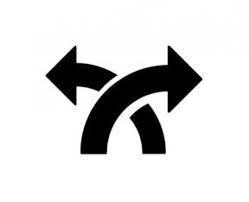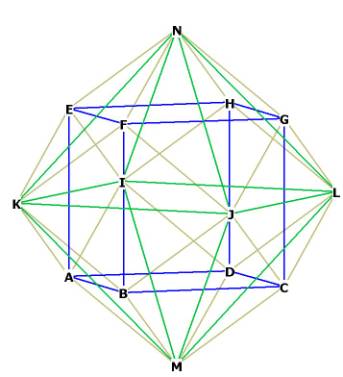|
(2017
midterm assignment) Model Student Midterm answers 2017 (Index) Essay 1: Compare, contrast, and evaluate Narratives of the Future |
 |
Tanner House
11/6/2017
Comparative Futures (Essay 1)
When
discussing the “literature of the future”, it is absolutely necessary to
acknowledge the fears, concerns, and anxieties of both the past and present.
Without the context of where we are and where we have been, speculating about
the future of humanity becomes a pointless exercise in futility, grounded in
nothing but the fantastical. Former student Tom Britt’s 2016 pre midterm essay
“A Gift to the Dead and a Warning to the Living” affirms this notion of the
necessity of the literature of the future to be grounded in the context of both
the past and present. Necessities, however, can be problematic, as the idea that
literature MUST contain something seems to limit the very scope of literature.
If topics must be covered, and universals are established, then visions can be
compromised. Literature of the future addresses this concern in the form of
multiple distinct, concurrent narratives: the creation/apocalypse narrative, the
evolution narrative, and the alternative future narrative. These narratives are
all concerned with similar issues, but they take different approaches to said
issues, creating a discourse in which we can discuss the future through a
variety of different, but equally valid, interpretive lenses.
The
creation/apocalypse narrative and the evolution narrative are the two visions of
the future which are most directly concerned with the issues of the past and
present. Creation narratives, by their very definition, have to consider the
context of humanity’s past. If we wish to explore where we came from, we must
acknowledge where we have actually been. One of the biggest themes in
creation/apocalypse narratives is the concept of revelation, or the idea of some
sort of ultimate understanding divined through the intervention of the
supernatural. This concept is fully on display in the scriptural texts covered
in the course. Genesis and Revelation (particularly Revelation) are the word of
God himself, and offer a vision of humanity’s beginning and end. Genesis begins
with “The Creation” itself, and simply states that “In the beginning God created
the heaven and the Earth.” As
Genesis progresses, God begins to give shape and from to the dark void which
originates from his creation, and man is shaped in the image of God. This
conception of the creation narrative is one of the most fascinating texts that
we have, as it outlines the processes of creation in which a God who is the
invention of man invents man in the image of himself, an image which was created
by man in the image of itself. In essence, we made God in our image, who in turn
made us in his image. This paradox of creation has been one of humanity’s
longest lasting fascinations, and our inability to understand from where we
truly came has in turn led us to constantly wonder how we will end. Revelation
details the process of our end, and this is demonstrative of the linear
narrative structure that is typically associated with the creation/apocalypse
narrative.
Many of the themes present in these
scriptural texts are reflected in Octavia Butler’s
Parable of the Sower.
Parable parallels many of the
concepts of a more traditional creation/apocalypse narrative but also
simultaneously introduces concepts associated with an evolutionary narrative.
These narratives are valid, but they are lacking in empirical evidence, leading
to subjective interpretations which can weaken the strength of their arguments.
On the other hand, evolutionary narratives are often directly concerned with the
empirical. Evolutionary narratives have their own sort of revelations, but they
are divined not through the supernatural but the empirical. Their claims are
based on observation, and assert that the story of creation, and destruction,
resemble structure like circles and spirals. According to the evolutionary
narrative, humanity’s beginning, and its demise, can be traced through objective
and empirical evidence. Evolutionary narratives also carry themes and ideas that
reflect the concept of Social Darwinism, or the idea of the “survival of the
fittest”. Here, Parable merges the
creation/apocalypse narrative and the evolutionary narrative. The apocalypse has
come and wiped out the previous way of life, but now new social structures have
taken hold as the strongest of humanity’s survivors have risen up to create a
new world. Life springs from destruction, and evolutionary forces come to the
forefront in the creation of the new world.
A
similar process occurs in H.G. Wells The
Time Machine, in which an apocalyptic event takes place, wipes out humanity,
and paves the way for new forms of life to grow and eventually dominate the
remnants of the earth. Time Machine
is far more concerned with evolution than
Parable, however, as it directly addresses time on the cosmic/geologic
scale. The Traveler moves thousands of years into the future, and comes to a
point in time where humanity is not even a memory of time but just a simple
speck on the timescale, long extinct and forgotten. This narrative style allows
Wells to explore the future without the pretext of human influence while
simultaneously establishing that certain distinctly human ideas and conceptions,
like civilization and economics, might be inherent and necessary for sentient,
conscious communities to exist. If
Parable merges the creation/apocalypse narrative with the evolutionary
narrative, then Time Machine merges
the evolutionary narrative with the final narrative we have covered in the
course, the alternative future narrative.
The
alternative future narrative takes ideas and concepts from the other two
narratives to create a sort of far more flexible hybrid narrative. Alternative
future narratives combine the empirical and supernatural in order to form a
better-rounded and complete vision of the future, often explaining their
chronology through things like alternate dimensions, forking paths, and parallel
worlds. A number of our texts have depicted alternative futures (The
Time Machine, “The Garden of Forking Paths”, “Mozart in Mirrorshades”) and
these texts all contain some conception of time as a maze/labyrinth/spiral,
often delving into subjects more traditionally associated with theoretical
physics, like worm holes, time spirals, and alternate or parallel dimensions.
The theoretical and more open ended conventions of these narratives often allow
them to more freely discuss and experiment with many of the concerns of
literature of the future. By not limiting themselves to specific structures,
alternative future narratives are enabled to bore completely explore future
concepts that themselves are difficult to define with structures, like culture
and gender. These narratives are also often far more experimental and playful
than their counterparts, as they deal with concepts and ideas that do not
necessarily translate very well into the sometimes too serious discourse of
traditional, “high” literature.
Allowing Mozart to exist as a time travelling, reality warping antihero is not
something that many other forms of the medium are allowed to do, but the
alternate future narrative enables its authors to do just that, disregard
expectation and practicality in favor of exploration and discovery.
These
three conceptions of the narratives of the future that make up our course all
carry with them distinct characteristics and qualities, and yet the most
effective and memorable texts which we have studied often combine or blend
aspects of all three of them to create more well-rounded and complete visions of
the future. The necessity of convention in defining mediums and genres is almost
thrown out in the discourse of literature of the future, as the subject itself
is one that defies convention. Any narrative of the future is ultimately going
to be an exercise in speculation, and the realm of speculation is infinite.
These narratives allow us to explore and navigate that realm, and by attempting
to define or predict the future often reveal more about the past and present. We
project our present fears and concerns into the narratives of the future in
order to distance ourselves from them, so that we may better understand them.
The narratives of the future are, by disubstantiation, very much the narratives
of the present.
 |
 |
 |
